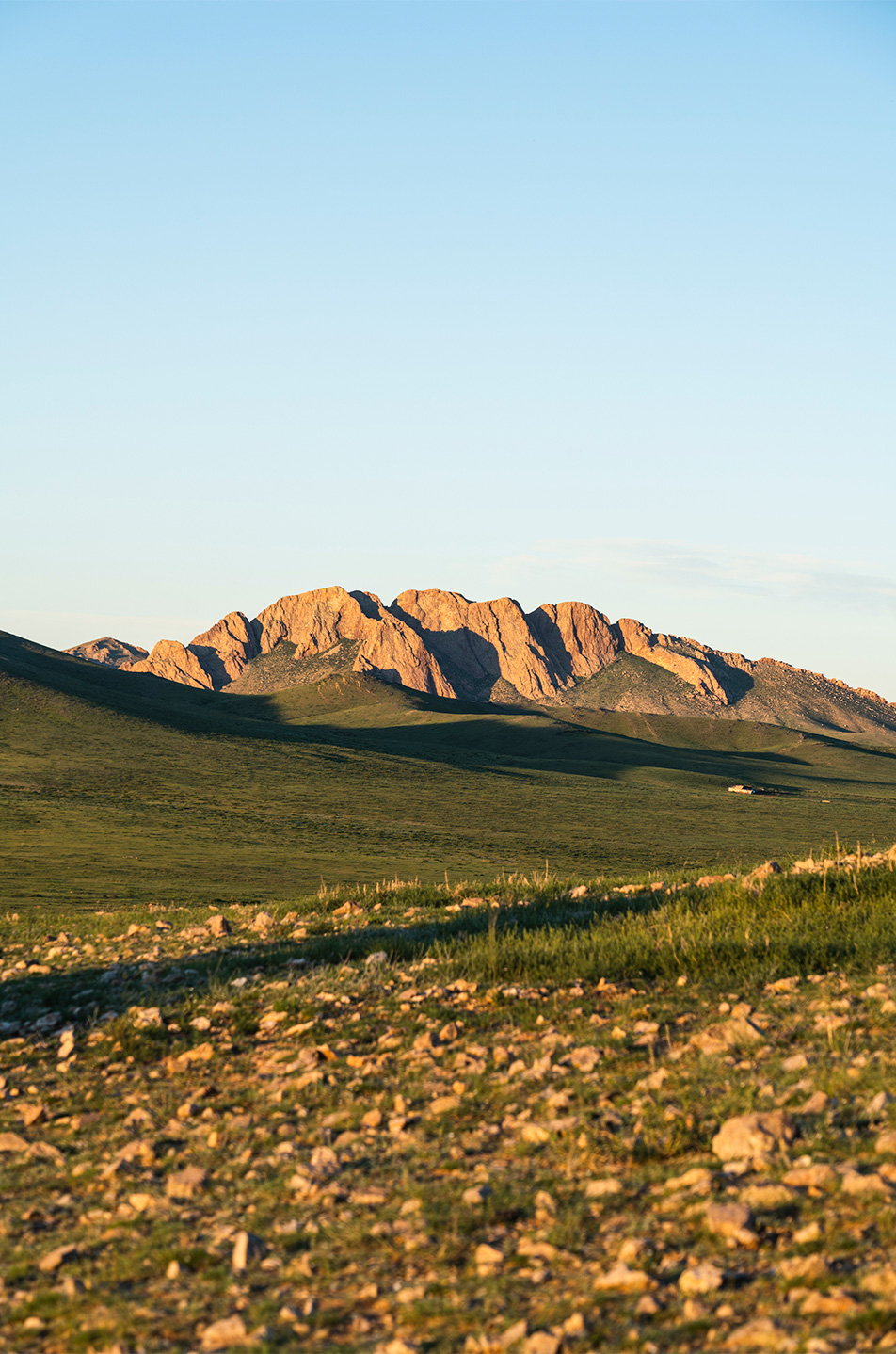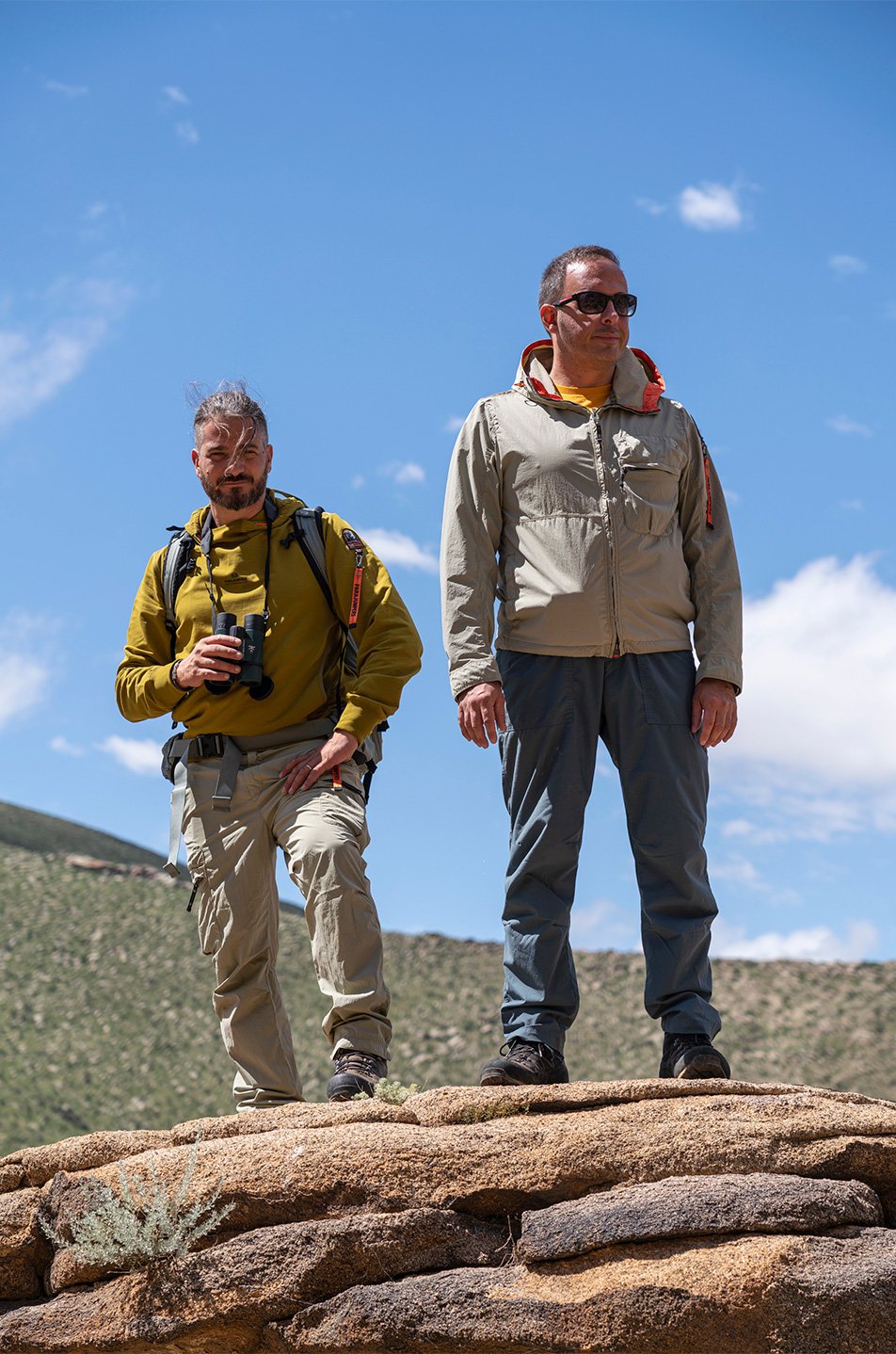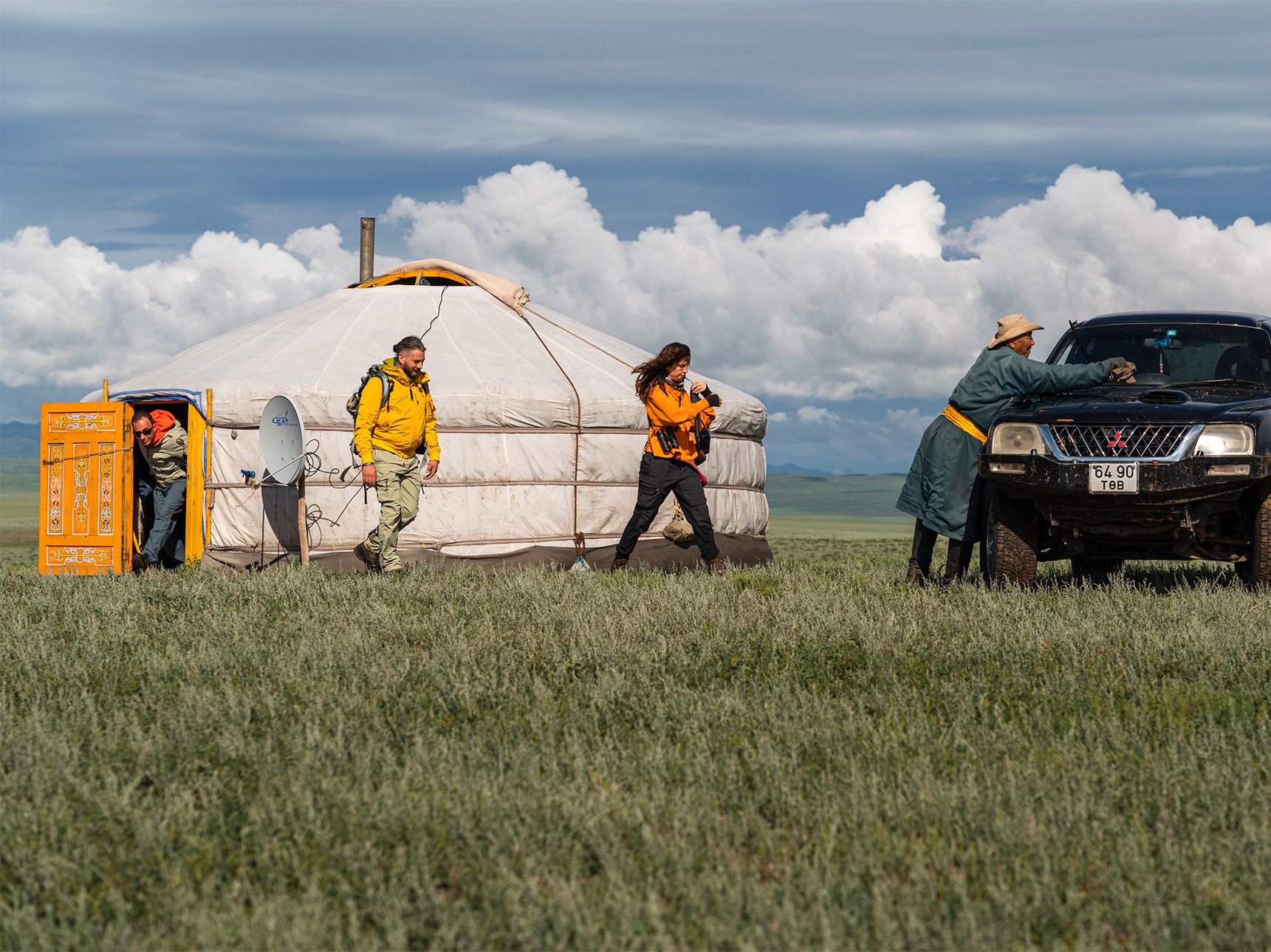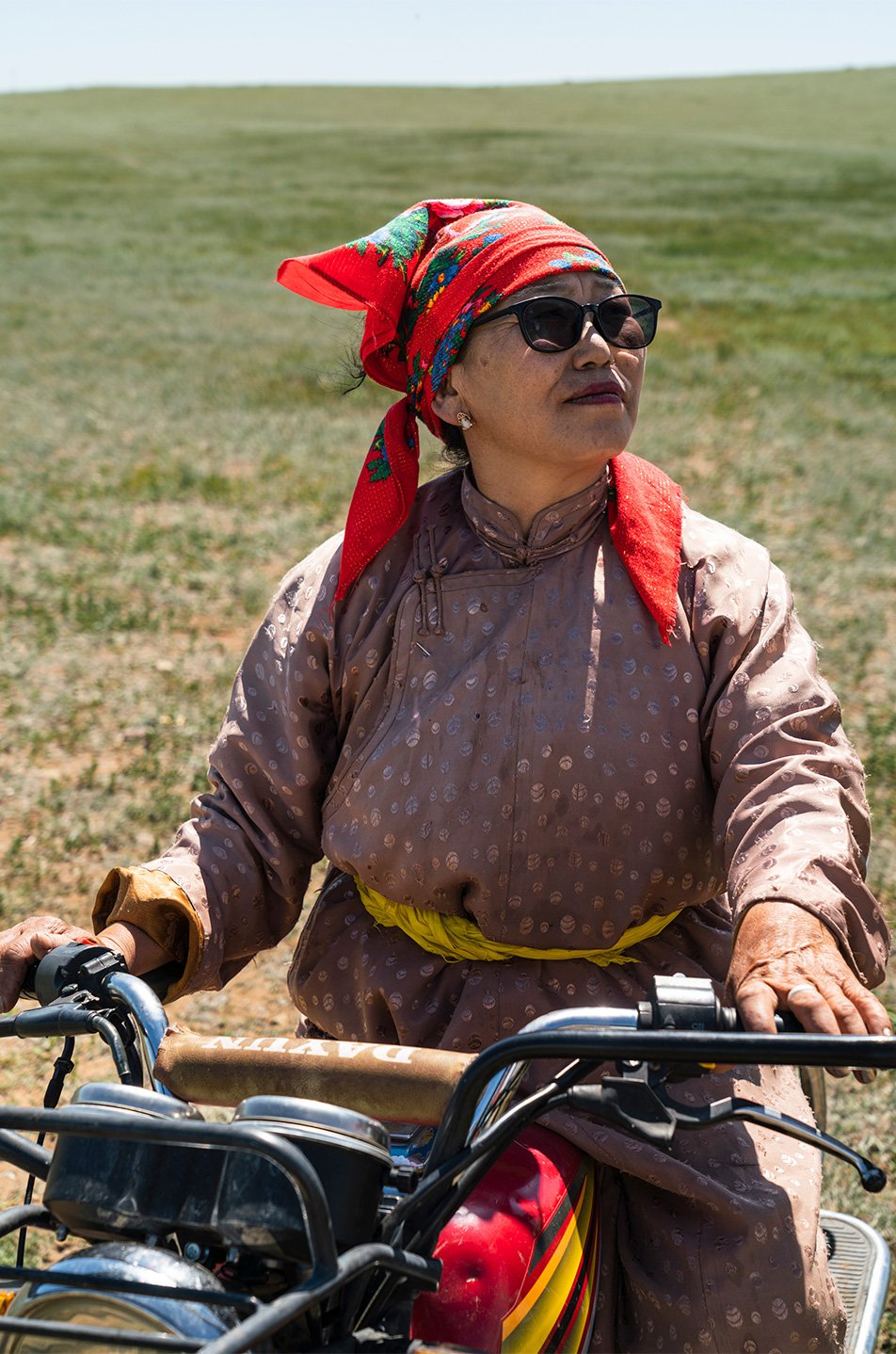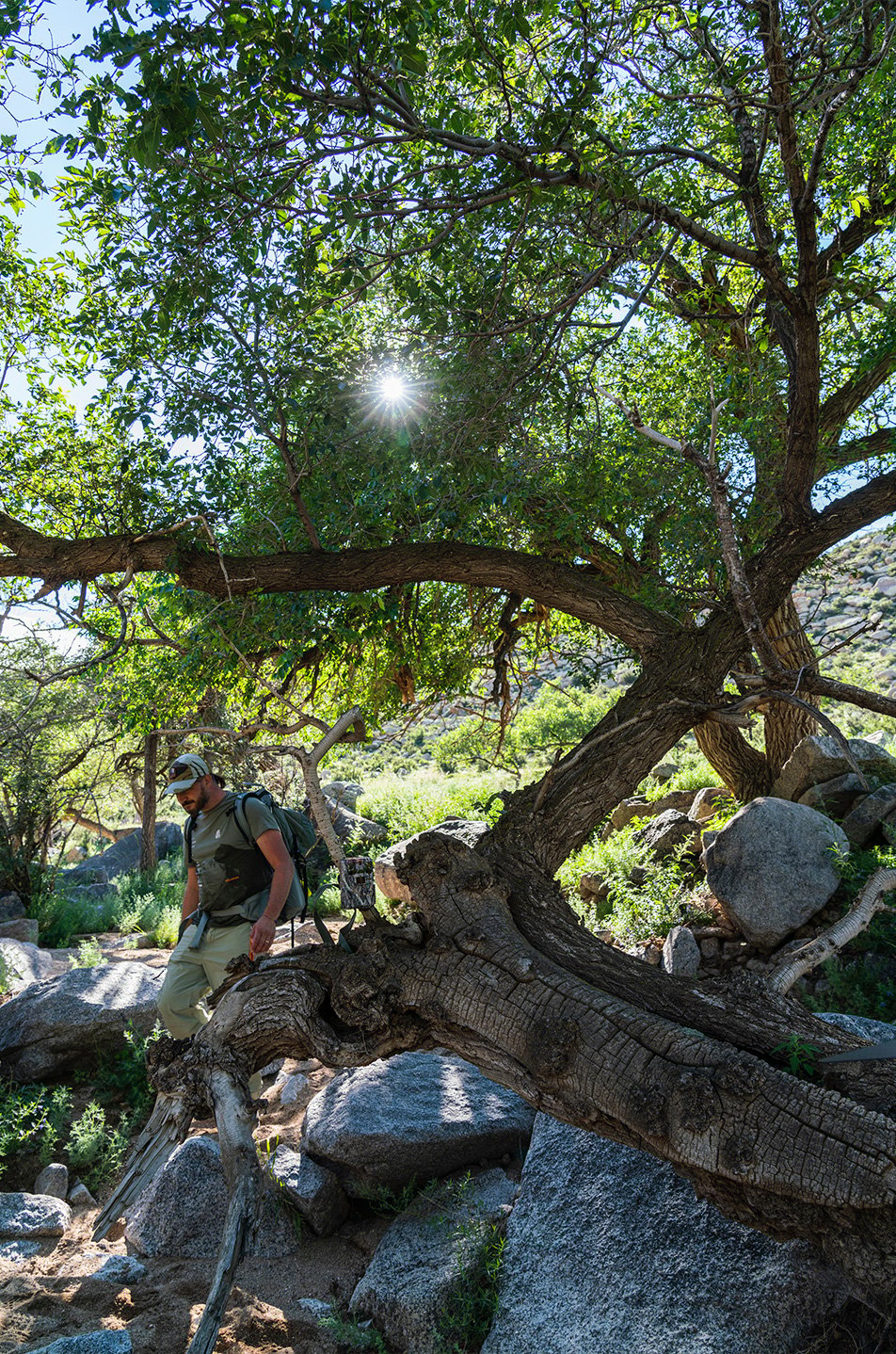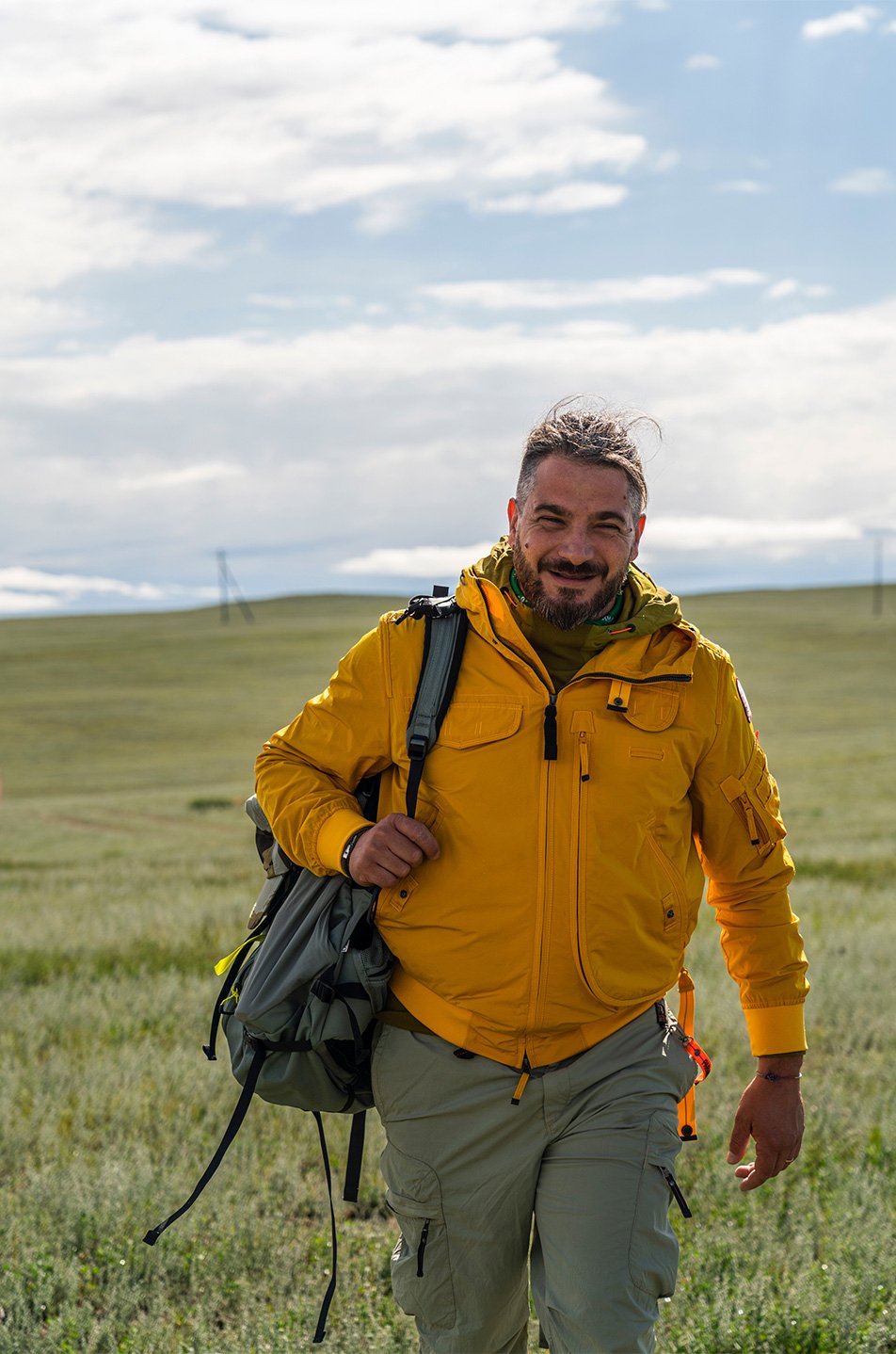
For protection against the harsh winds and ever-fluctuating temperatures of the Mongolian steppe, the Wildlife Initiative team wore Parajumpers’ classic Gobi Spring jacket, its yellow Solotex poplin vibrant against the neutral tones of the rocky landscape. This was layered over a light T-shirt, and paired with our Rescue Uniform pants, made from hard-wearing stretch ripstop.
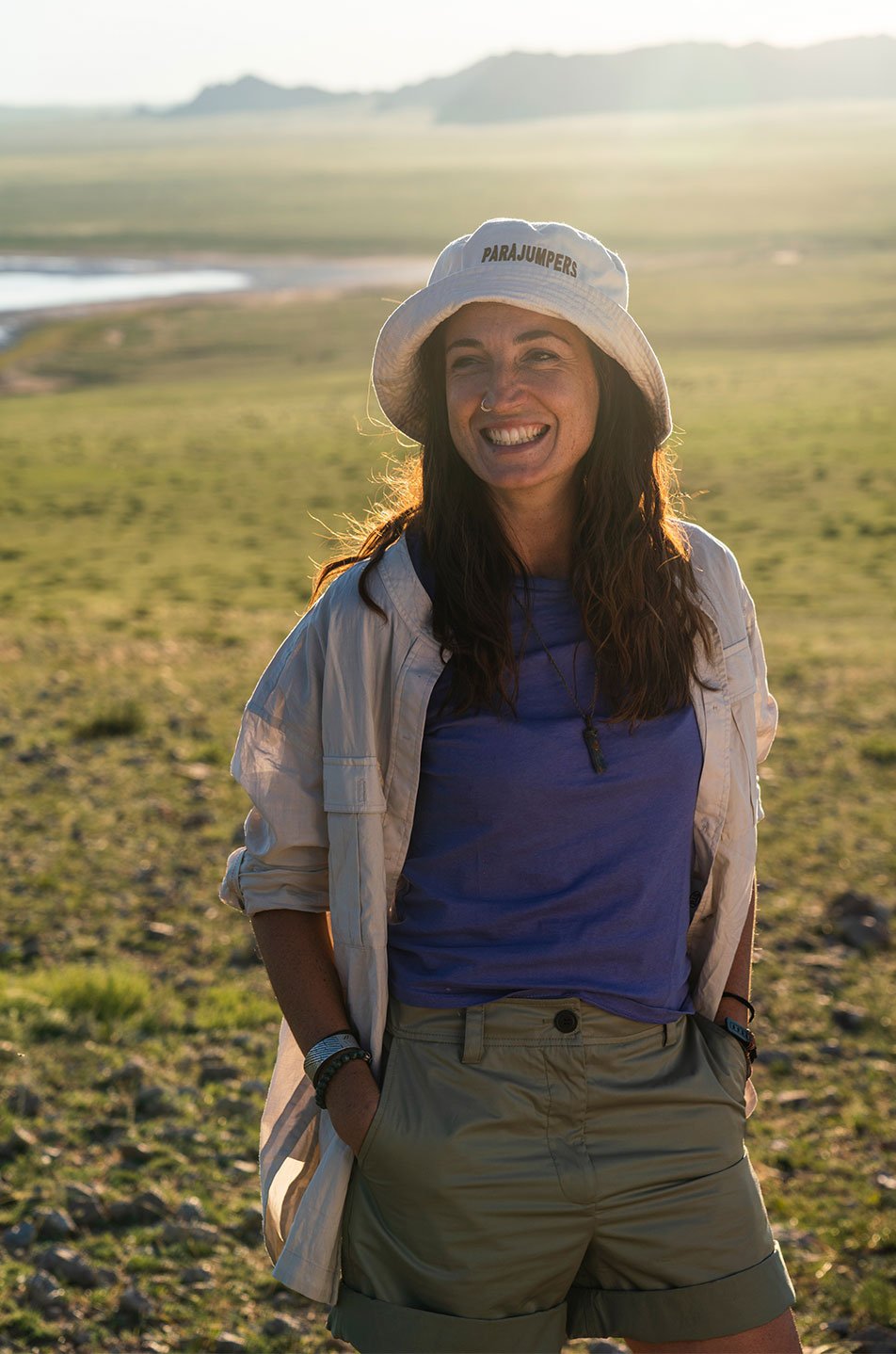
And for the blazing sunshine that illuminates the vast horizon, Wildlife Initiative chose canvas hats, light muslin shirts and easy-to-wear shorts from our Safariana series.
The hard work of the team pays off: the team records around 23 Pallas’ cats making hundreds of journeys. Analysing this data involves identifying individual cats in order to estimate population density, as well as gathering information to verify what experts believed was Pallas’ cat’s main food source: the pica and the Mongolian silver vole. But it’s through this intense data capture and interpretation – the result of many hours of painstaking hard work - that we’ve been able, for the first time, to truly begin to understand the Pallas’ cat.
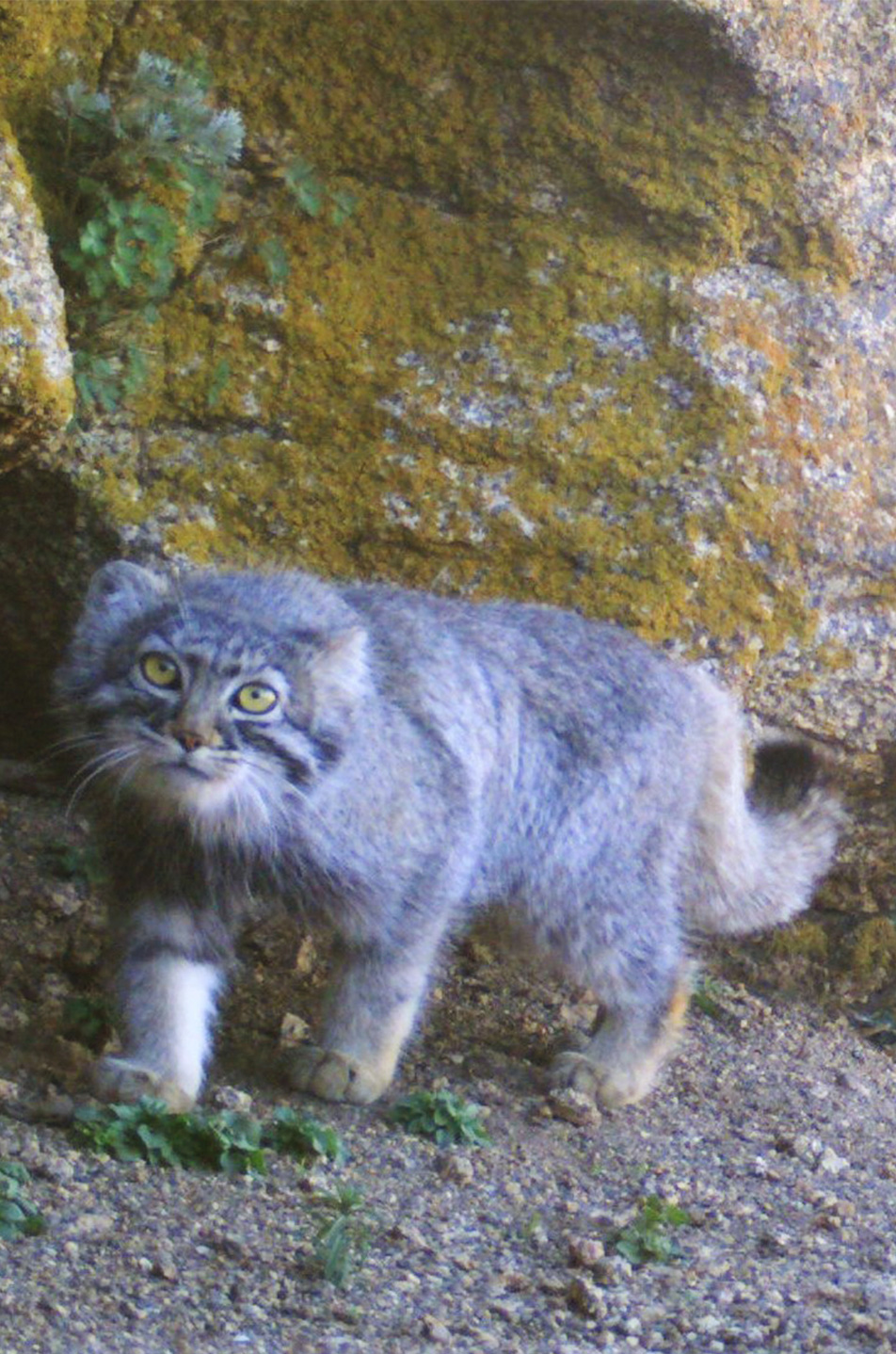
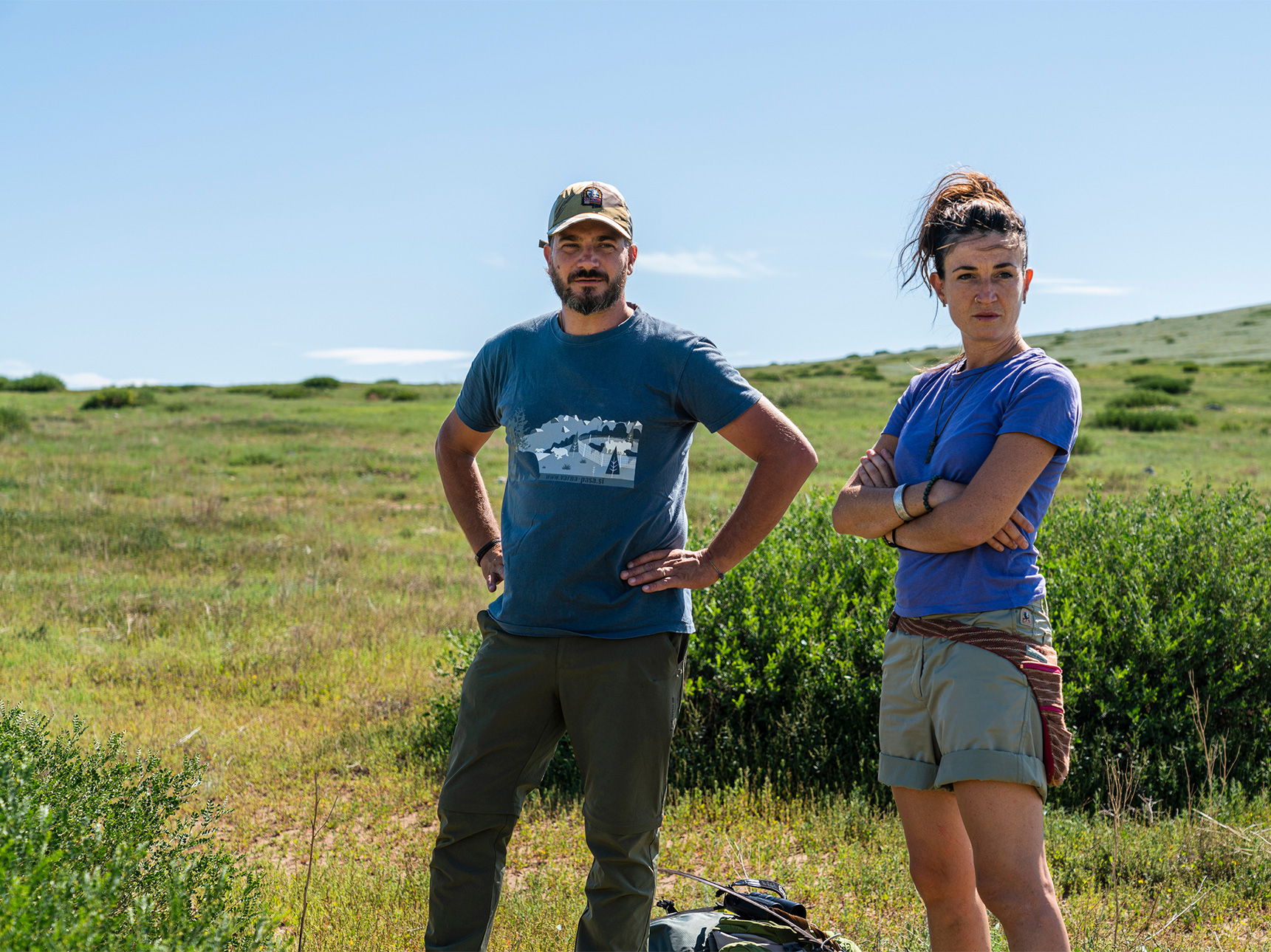
It’s this dedication – the commitment to hard work, adventure, and sheer determination, no matter the circumstances – that inspires and motivates Parajumpers’ efforts to support organizations like the Wildlife Initiative.
DÉCOUVREZ LES AUTRES PROJETS SPÉCIAUX
-
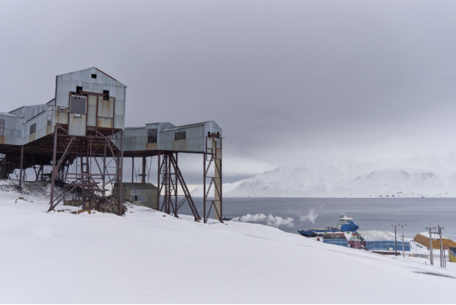 VOICES FROM AN ICY COASTLes Histoires de Parajumpers parlent de vies extraordinaires, vécues dans les lieux les plus éloignés de la terre où les forces puissantes de la nature font de la survie quotidienne un défi extrême.Découvrez maintenant
VOICES FROM AN ICY COASTLes Histoires de Parajumpers parlent de vies extraordinaires, vécues dans les lieux les plus éloignés de la terre où les forces puissantes de la nature font de la survie quotidienne un défi extrême.Découvrez maintenant -
 WIGGO ANTONSENLongyearbyen est le plus grand centre habité et administratif du Svalbard.Découvrez maintenant
WIGGO ANTONSENLongyearbyen est le plus grand centre habité et administratif du Svalbard.Découvrez maintenant -
 HEIDI SEVESTRESvalbard en norvégien veut dire "Côte glacée" ; cependant, Heidi Sevestre, un "médecin des glaciers" a vu au cours des dernières décennies des signaux inquiétants de changement de ce paysage.Découvrez maintenant
HEIDI SEVESTRESvalbard en norvégien veut dire "Côte glacée" ; cependant, Heidi Sevestre, un "médecin des glaciers" a vu au cours des dernières décennies des signaux inquiétants de changement de ce paysage.Découvrez maintenant -
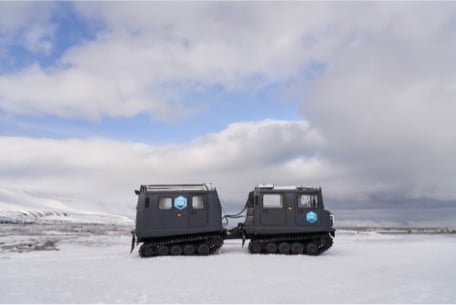 JASON ROBERTSLa beauté dure du Svalbard fait qu’il est difficile de l’abandonner. Il suffit de demander à Jason Roberts, originaire d'Australie et l'un des plus anciens résidents de l'archipel norvégien.Découvrez maintenant
JASON ROBERTSLa beauté dure du Svalbard fait qu’il est difficile de l’abandonner. Il suffit de demander à Jason Roberts, originaire d'Australie et l'un des plus anciens résidents de l'archipel norvégien.Découvrez maintenant -
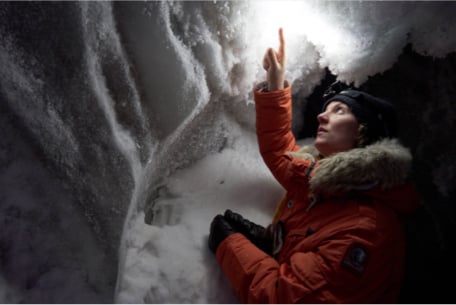 KRISTIN ERIKSSONEmmener les gens dans des excursions dans les terres sauvages du Svalbard est "le meilleur travail que vous puissiez souhaiter", déclare Kristin Eriksson. À tout juste 23 ans, Kristin est déjà un guide naturaliste sur 3 continents.Découvrez maintenant
KRISTIN ERIKSSONEmmener les gens dans des excursions dans les terres sauvages du Svalbard est "le meilleur travail que vous puissiez souhaiter", déclare Kristin Eriksson. À tout juste 23 ans, Kristin est déjà un guide naturaliste sur 3 continents.Découvrez maintenant -
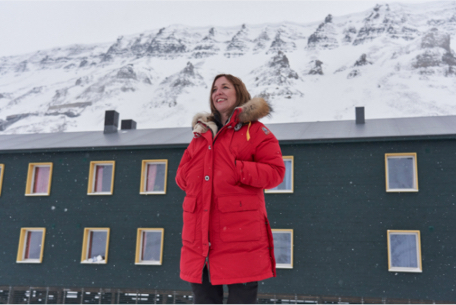 HEGE GISKEAu cours des dix dernières années, l’archipel du Svalbard est devenu une destination de plus en plus populaire pour les touristes, poussés par le désir d'explorer la beauté de ces lieux et de comprendre ce que signifie survivre dans une communauté et comme individusDécouvrez maintenant
HEGE GISKEAu cours des dix dernières années, l’archipel du Svalbard est devenu une destination de plus en plus populaire pour les touristes, poussés par le désir d'explorer la beauté de ces lieux et de comprendre ce que signifie survivre dans une communauté et comme individusDécouvrez maintenant


